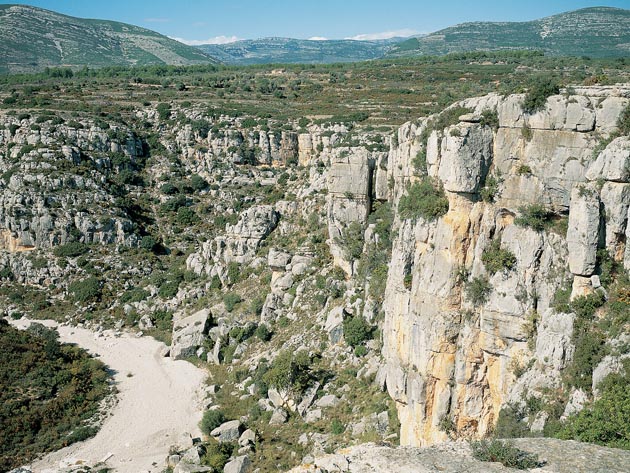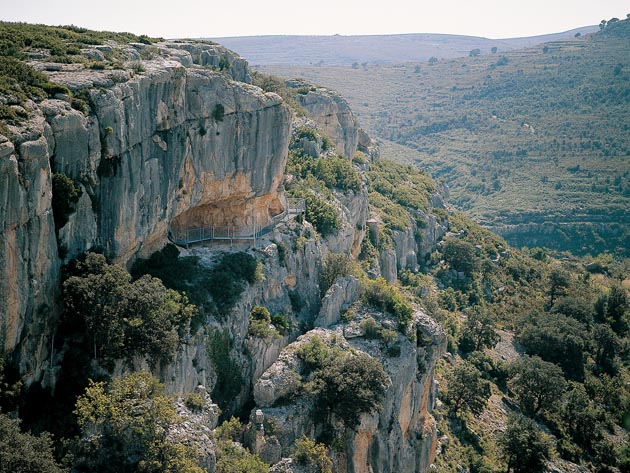Barranco de la Valltorta
The Barranco de la Valltorta is a natural space in Maestrazgo that includes Tírig, Albocásser, Cuevas de Vinromá, and it is both culturally and ethnologically important.
Thousands of years ago their inhabitants, the creators of Levantine cave art, painted scenes from their daily lives and mythology in these caves. If we study them, we can put together aspects of the life of some of the societies that lived in this almost untouched landscape. However, its transformation was hastened over the course of time. The overexploitation of forests, the clearing of areas for grazing and the rotation of soil for agriculture created a humanised landscape. Today, the distinguishing features of Valltorta are its Levantine cave paintings, its rural drystone architecture, a varied biological environment and its museum. This museum acts as a welcome centre for visitors, providing information on the most interesting aspects of Valltorta.
A visit to the Barranco de la Valltorta is interesting, for two reasons. Firstly, these paintings depict the religious preoccupations and ways of life of some of the men who started to paint on the walls of these small caves seven thousand years ago. Additionally, it presents the chance to get close to a humanised landscape, shaped by the traditional systems of agricultural and cattle farming, now preserved as interesting architectural remains, such as huts, watermills and shacks. Despite man’s influence on this landscape, Valltorta is an ecosystem that contains a variety of vegetation as well as species such as Bonelli’s eagle (Aquila fasciata) and the Iberian Ibex (Capra pyrenaica). A visit to the Barranco de la Valltorta is interesting, for two reasons. Firstly, these paintings depict the religious preoccupations and ways of life of some of the men who started to paint on the walls of these small caves seven thousand years ago. Additionally, it presents the chance to get close to a humanised landscape, shaped by the traditional systems of agricultural and cattle farming, now preserved as interesting architectural remains, such as huts, watermills and shacks.
Despite man’s influence on this landscape, Valltorta is an ecosystem that contains a variety of vegetation as well as species such as Bonelli’s eagle (Aquila fasciata) and the Iberian Ibex (Capra pyrenaica).
21 small caves with Levantine art have been found in Valltorta, an expression of prehistoric art that can be found throughout the eastern part of the Iberian Peninsula, from Huesca and Lérida in the north, to Murcia and Albacete in the south, with an exceptional concentration of prehistoric rock art in Valencia. In the small caves of Valltorta there are paintings of human and animal figures with great naturalism, more obvious in the last ones, always painted in different shades of red.









